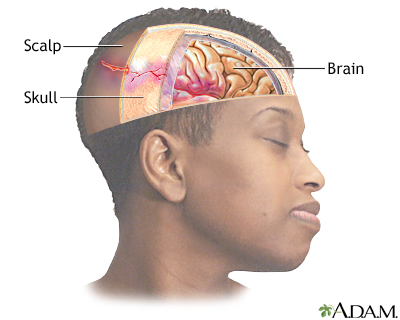First Aid on Head Injury
Head injury most common cause by traffic accidents, falls, physical assault, and accidents at home, work, outdoors, or while playing sports.
Head injuries may result a minor bump on the skull to serious brain injury, So it is extremely important to pay close attention to the following symptom :
- Lost of consciousness
- Abnormal breathing (interruption of breathing)
- Bleeding or clear fluid from the nose, ear, or mouth
- Vomiting more than two to three times
 If you find the victim of head injury with any symptom above, it's mean the victim having seriouse head trauma and will require profesional medical attention as the first aid action. Call 911 (ambulance) or emergency medical services (EMS) immediatelly.
If you find the victim of head injury with any symptom above, it's mean the victim having seriouse head trauma and will require profesional medical attention as the first aid action. Call 911 (ambulance) or emergency medical services (EMS) immediatelly.Before the EMS team arrives, do the first aid action bellow :
- Stop any bleeding by firmly pressing a clean cloth on the wound
- Check the person's airway, breathing, and circulation. If necessary, begin rescue breathing and CPR.
- If possible, place the victim in a dim (quite area), but if the injury is serious, be careful not to move the person's head
- Do not leave the victim unattened
- If the person is vomiting, roll the head, neck, and body as one unit to prevent choking.
- Do not apply direct pressure to the wound area if there is suspect fractur of skull Read more!














